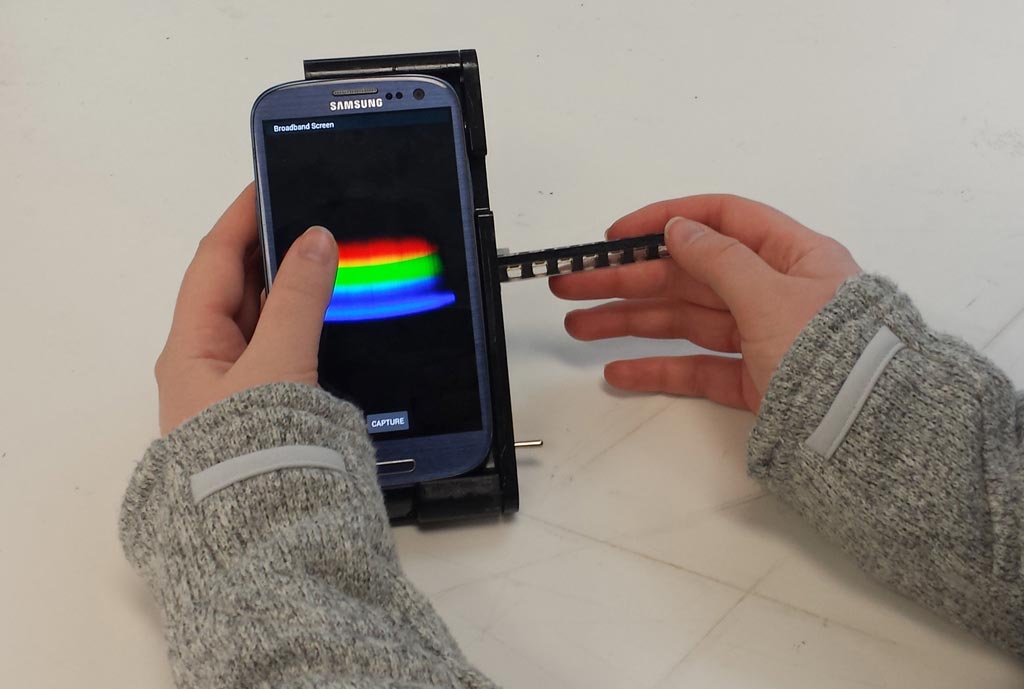Smartphone-Based Analyzer Designed for Sample Testing
By LabMedica International staff writers
Posted on 21 Aug 2017
A handheld spectrophotometer that uses a smartphone camera to measure changes in absorption of natural light or emission of fluorescent light is the key to a mobile instrument that can evaluate biological samples with the accuracy of clinical laboratory analyzers but at a fraction of the cost.Posted on 21 Aug 2017
Investigators at the University of Illinois College of Engineering (Urbana-Champaign, USA) utilized the smartphone's internal rear-facing camera as a high-resolution spectrometer for measuring the colorimetric absorption spectrum, fluorescence emission spectrum, and resonant reflection spectrum from a microfluidic cartridge inserted into the measurement light path. Under user selection, the instrument gathered light from either the white “flash” LED of the smartphone or an integrated green laser diode to direct illumination into a liquid test sample or onto a photonic crystal biosensor.

Image: The spectral transmission-reflectance-intensity (TRI)-Analyzer attaches to a smartphone and analyzes patient blood, urine, or saliva samples as reliably as clinic-based instruments that cost thousands of dollars (Photo courtesy of the Department of Bioengineering, University of Illinois at Urbana-Champaign).
Light emerging from each type of assay was gathered via optical fiber and passed through a diffraction grating placed directly over the smartphone camera to generate spectra from the assay when an image was collected. Each sensing modality was associated with a unique configuration of a microfluidic “stick” containing a linear array of liquid chambers that were swiped through the instrument while the smartphone captured video, and the software automatically selected spectra representative of each compartment.
The capabilities of the spectral transmission-reflectance-intensity (TRI)-analyzer were demonstrated by using it to perform representative assays in the field of point-of-care (POC) maternal and infant health: an ELISA assay for the fetal fibronectin protein used as an indicator for pre-term birth and a fluorescent assay for phenylalanine as an indicator for phenylketonuria. In each case, the TRI-analyzer was capable of achieving limits of detection that were comparable to those obtained for the same assay measured with a conventional laboratory microplate reader.
The investigators estimated that an instrument built to the patented TRI Analyzer specifications would cost only about 550 USD as compared to several thousand dollars for a clinical laboratory analyzer.
"Our TRI Analyzer is like the Swiss Army knife of biosensing," said senior author Dr. Brian T. Cunningham, professor of engineering at the University of Illinois College of Engineering. "It is capable of performing the three most common types of tests in medical diagnostics, so in practice, thousands of already-developed tests could be adapted to it."
Details of the TRI Analyzer were published in the July 24, 2017, online edition of the journal Lab on a Chip.
Related Links:
University of Illinois College of Engineering













